新概念英语第一册第31课Lesson31课文单词知识点
- 格式:doc
- 大小:155.50 KB
- 文档页数:2
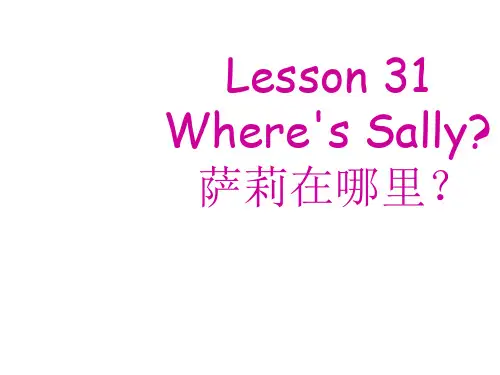
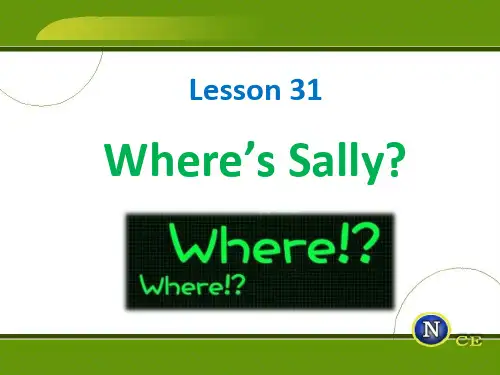
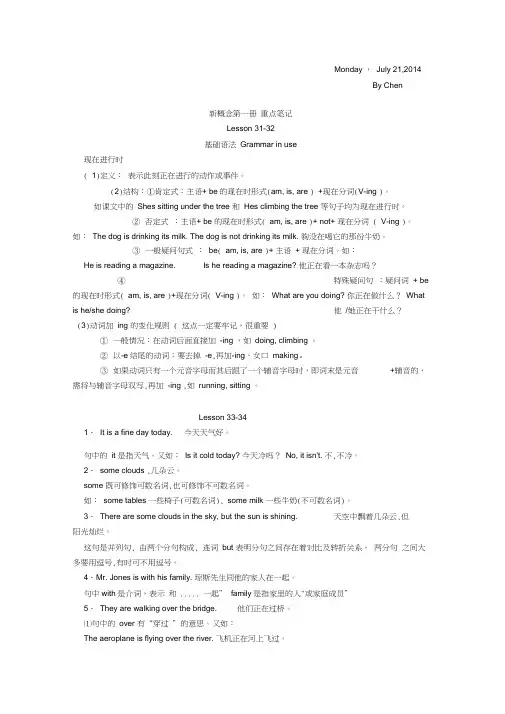
Monday ,July 21,2014By Chen新概念第一册重点笔记Lesson 31-32基础语法Grammar in use现在进行时( 1)定义:表示此刻正在进行的动作或事件。
(2)结构:①肯定式:主语+ be的现在时形式(am, is, are ) +现在分词(V-ing )。
如课文中的Shes sitting under the tree 和Hes climbing the tree 等句子均为现在进行时。
②否定式:主语+ be 的现在时形式( am, is, are )+ not+ 现在分词 ( V-ing )。
如:The dog is drinking its milk. The dog is not drinking its milk. 豿没在喝它的那份牛奶。
③一般疑问句式:be( am, is, are )+ 主语+ 现在分词。
如:He is reading a magazine. Is he reading a magazine? 他正在看一本杂志吗?④特殊疑问句:疑问词+ be 的现在时形式( am, is, are )+现在分词( V-ing )。
如:What are you doing? 你正在做什么?What is he/she doing? 他/她正在干什么?(3)动词加ing 的变化规则 ( 这点一定要牢记,很重要 )①一般情况:在动词后面直接加-ing ,如doing, climbing 。
②以-e结尾的动词:要去掉-e,再加-ing,女口making。
③如果动词只有一个元音字母而其后跟了一个辅音字母时,即词末是元音+辅音的,需将与辅音字母双写,再加-ing ,如running, sitting 。
Lesson 33-341.It is a fine day today. 今天天气好。
句中的it 是指天气。
又如:Is it cold today? 今天冷吗?No, it isn't. 不,不冷。
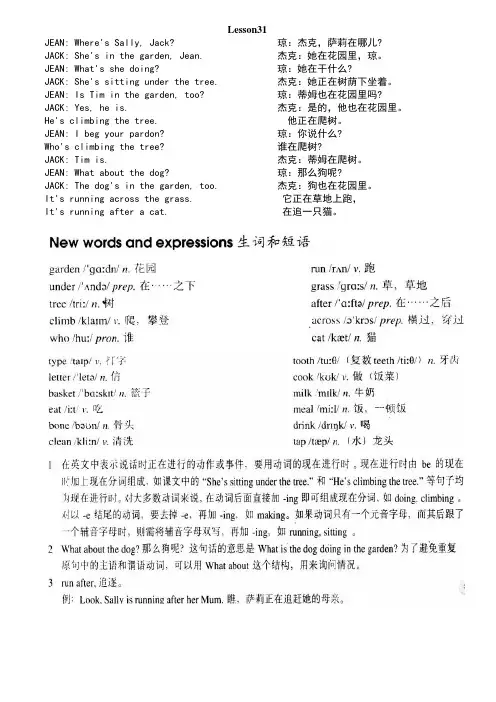
Lesson31JEAN: Where's Sally, Jack?JACK: She's in the garden, Jean. JEAN: What's she doing?JACK: She's sitting under the tree. JEAN: Is Tim in the garden, too? JACK: Yes, he is.He's climbing the tree.JEAN: I beg your pardon?Who's climbing the tree?JACK: Tim is.JEAN: What about the dog?JACK: The dog's in the garden, too. It's running across the grass.It's running after a cat.琼:杰克,萨莉在哪儿?杰克:她在花园里,琼。
琼:她在干什么?杰克:她正在树荫下坐着。
琼:蒂姆也在花园里吗?杰克:是的,他也在花园里。
他正在爬树。
琼:你说什么?谁在爬树?杰克:蒂姆在爬树。
琼:那么狗呢?杰克:狗也在花园里。
它正在草地上跑,在追一只猫。
【知识点讲解】1. 今天要学习一个重要的语法点:现在进行时态。
在英语中,要表达正在发生的动作或事件,需要用这个时态。
这个时态的基本格式是:be动词现在时+动词的现在进行时态简单一点说就是"am/are/is + 动词ing形式"。
比如课文中的"She's sitting..." "He's climbing..." "It's running..."动词变成现在进行时态基本格式就是在后面直接加ing,比如climb-climbing, walk-walking, catch-catching...如果动词以e结尾,则去掉e加ing,比如give-giving, move-moving...如果动词只有一个元音字母,并在其后跟一个辅音字母,则将辅音字母双写、再加ing。
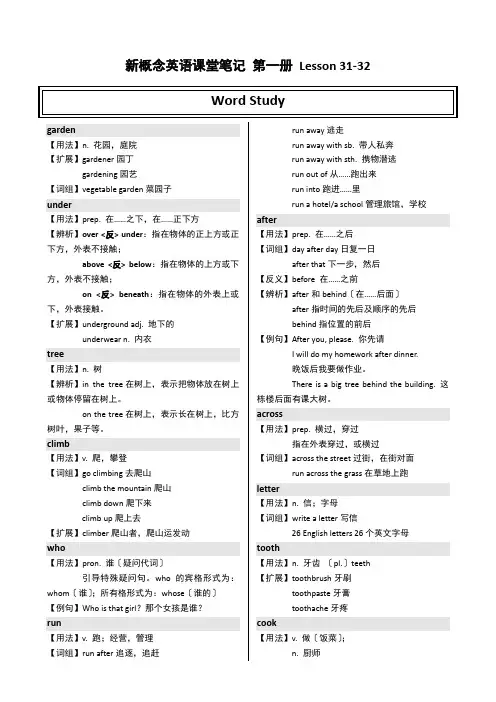
新概念英语课堂笔记第一册Lesson 31-32garden【用法】n. 花园,庭院【扩展】gardener园丁gardening园艺【词组】vegetable garden菜园子under【用法】prep. 在……之下,在……正下方【辨析】over <反> under:指在物体的正上方或正下方,外表不接触;above <反> below:指在物体的上方或下方,外表不接触;on <反> beneath:指在物体的外表上或下,外表接触。
【扩展】underground adj. 地下的underwear n. 内衣tree【用法】n. 树【辨析】in the tree在树上,表示把物体放在树上或物体停留在树上。
on the tree在树上,表示长在树上,比方树叶,果子等。
climb【用法】v. 爬,攀登【词组】go climbing去爬山climb the mountain爬山climb down爬下来climb up爬上去【扩展】climber爬山者,爬山运发动who【用法】pron. 谁〔疑问代词〕引导特殊疑问句。
who的宾格形式为:whom〔谁〕;所有格形式为:whose〔谁的〕【例句】Who is that girl?那个女孩是谁?run【用法】v. 跑;经营,管理【词组】run after追逐,追赶run away逃走run away with sb. 带人私奔run away with sth. 携物潜逃run out of从……跑出来run into跑进……里run a hotel/a school管理旅馆,学校after【用法】prep. 在……之后【词组】day after day日复一日after that下一步,然后【反义】before 在……之前【辨析】after和behind〔在……后面〕after指时间的先后及顺序的先后behind指位置的前后【例句】After you, please. 你先请I will do my homework after dinner.晚饭后我要做作业。
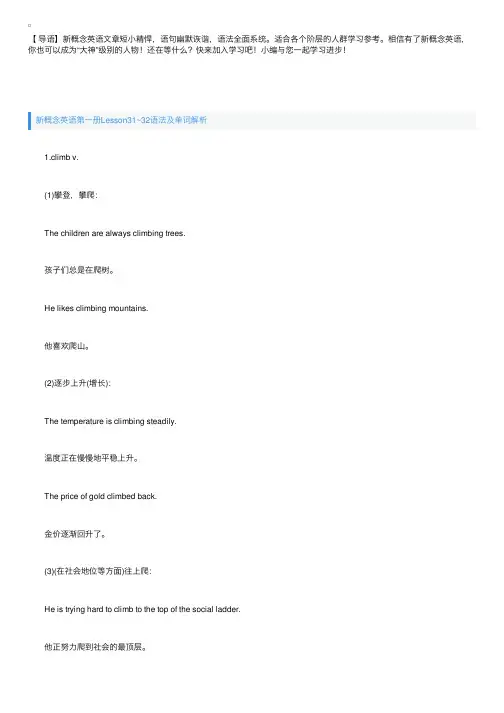
【导语】新概念英语⽂章短⼩精悍,语句幽默诙谐,语法全⾯系统。
适合各个阶层的⼈群学习参考。
相信有了新概念英语,你也可以成为“⼤神”级别的⼈物!还在等什么?快来加⼊学习吧!⼩编与您⼀起学习进步!新概念英语第⼀册Lesson31~32语法及单词解析 1.climb v. (1)攀登,攀爬: The children are always climbing trees. 孩⼦们总是在爬树。
He likes climbing mountains. 他喜欢爬⼭。
(2)逐步上升(增长): The temperature is climbing steadily. 温度正在慢慢地平稳上升。
The price of gold climbed back. ⾦价逐渐回升了。
(3)(在社会地位等⽅⾯)往上爬: He is trying hard to climb to the top of the social ladder. 他正努⼒爬到社会的最顶层。
He has climbed to a very high position in his field. 他已在⾃⼰的领域中爬到了⼀个很⾼的位置。
2.run v. (1)跑,奔跑: He is running quickly. 他正飞快地跑着。
He runs a mile every morning to keep fit. 他每天早晨跑⼀英⾥步以保持⾝体健康。
(2)流动;流出: The current is running strong. ⽔流湍急。
Her eyes ran with tears. 她落泪了。
(3)追赶;追逐: The dog is running after a cat. 那只狗正在追赶⼀只猫。
Many young men are running after that girl. 许多年轻⼈在追求那个姑娘。
语法 Grammar in use 现在进⾏时(1) (1)在英⽂中若想表达此刻正在进⾏的动作或事件,要⽤动词的现在进⾏时形式。
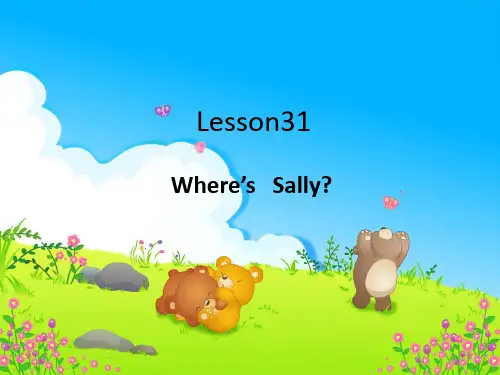

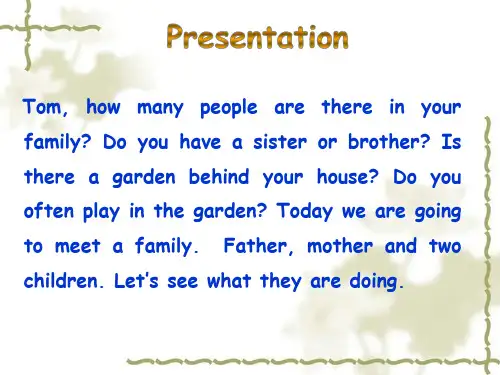
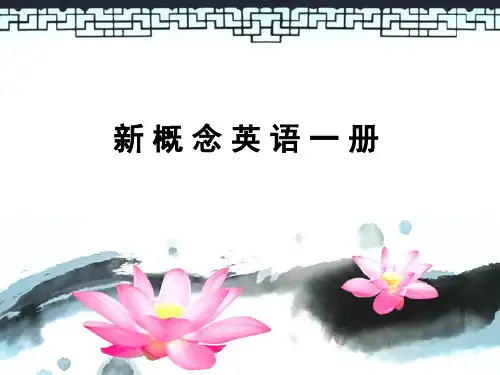

Lesson31
JEAN: Where's Sally, Jack?
JACK: She's in the garden, Jean. JEAN: What's she doing?
JACK: She's sitting under the tree. JEAN: Is Tim in the garden, too? JACK: Yes, he is.
He's climbing the tree.
JEAN: I beg your pardon?
Who's climbing the tree?
JACK: Tim is.
JEAN: What about the dog?
JACK: The dog's in the garden, too. It's running across the grass.
It's running after a cat.琼:杰克,萨莉在哪儿?
杰克:她在花园里,琼。
琼:她在干什么?
杰克:她正在树荫下坐着。
琼:蒂姆也在花园里吗?
杰克:是的,他也在花园里。
他正在爬树。
琼:你说什么?
谁在爬树?
杰克:蒂姆在爬树。
琼:那么狗呢?
杰克:狗也在花园里。
它正在草地上跑,
在追一只猫。
【知识点讲解】
1. 今天要学习一个重要的语法点:现在进行时态。
在英语中,要表达正在发生的动作或事件,需要用这个时态。
这个时态的基本格式是:
be动词现在时+动词的现在进行时态
简单一点说就是"am/are/is + 动词ing形式"。
比如课文中的"She's sitting..." "He's climbing..." "It's running..."
动词变成现在进行时态基本格式就是在后面直接加ing,比如climb-climbing, walk-walking, catch-catching...
如果动词以e结尾,则去掉e加ing,比如give-giving, move-moving...
如果动词只有一个元音字母,并在其后跟一个辅音字母,则将辅音字母双写、再加ing。
比如run这个字,它只有一个元音字母u,后面跟了一个辅音字母n,所以它的ing形式是running。
同理还有sit-sitting, shop-shopping, swim-swimming.
最后一条规则看似复杂,但其实这样的动词并不多,尤其在初级阶段。
大家只需要看到一个、记住一个就好。
2. What about...? 是一种省略的用法。
一般用于提及已谈论过的事物,后面可以跟物品、也可以跟人。
文中What about the dog? 实则是在询问What is the dog doing in the garden? 和前面两个问小孩的问题一样。
所以为了避免重复,这里只问What about the dog?
3. I beg you pardon? 意思是“什么?再说一遍”——在口语中一般简单说成“pardon?”或者"sorry?"。